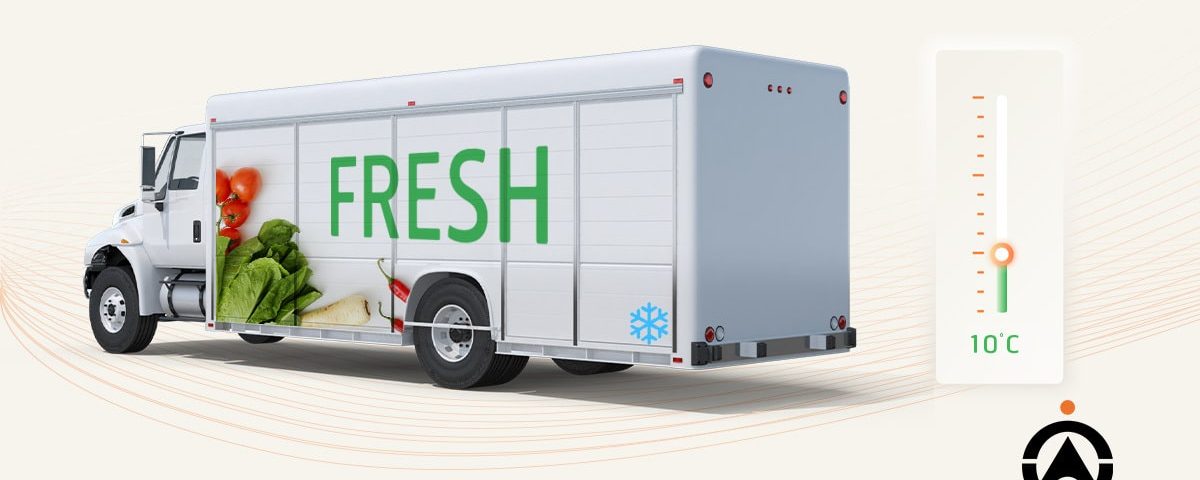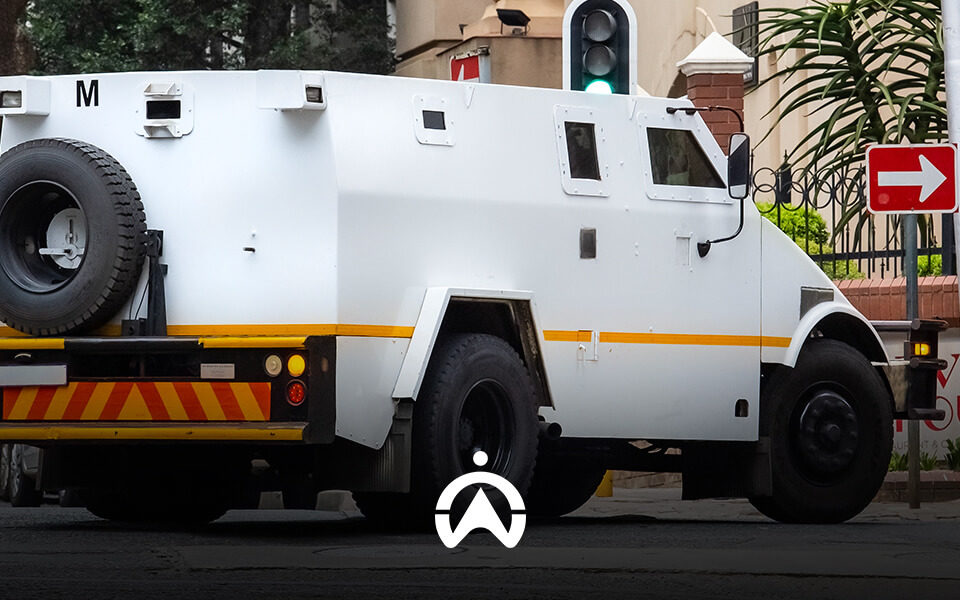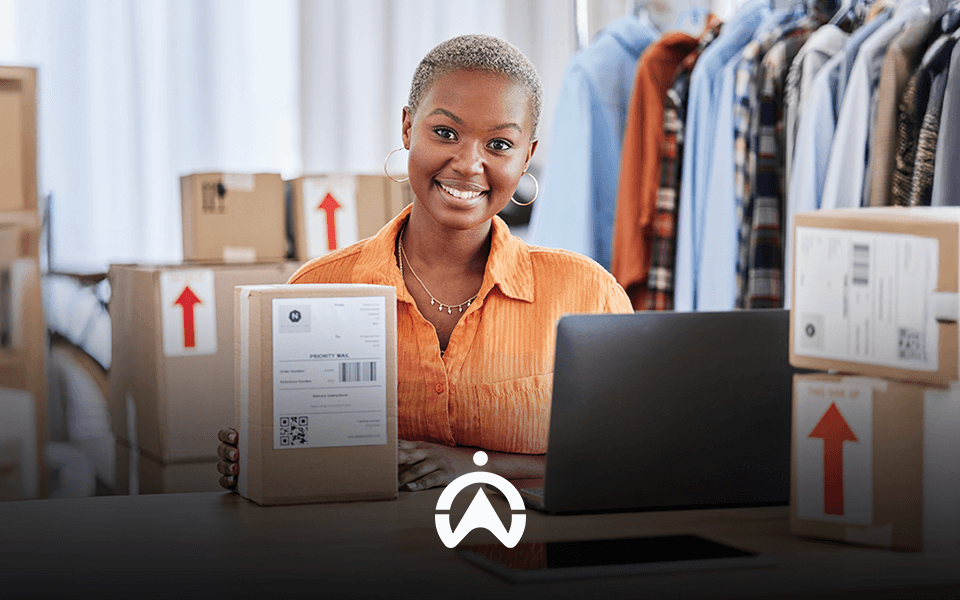Why does your fleet need to monitor frozen goods with Cartrack’s temperature monitoring system?
Don’t let the outside environment influence the quality of your product. Get a temperature monitoring system and control the temperature of your cargo area as well as your products.
In this article:
- Learn how temperature monitoring sensors help temperature monitoring systems minimise product damage.
- Know what to look for when choosing a monitoring system for your business.
- Gain insights into how temperature monitoring systems can solve your business’s logistics issues.
- Find out what Cartrack’s temperature monitoring solution can do for your company.
If you are a part of the food, beverage, medical or pharmaceutical industry, you know having the right temperature is the key to safeguarding your products against the outside environment. Temperature monitoring systems can be easily tailored to fit every industry and provide the right temperatures every time.
There are numerous remote temperature monitoring systems on the market that might be more suitable for one industry than the other. Read on to find the right one that will benefit both your business and your products.
https://www.youtube.com/embed/A-m6t19DGsU
What is a temperature monitoring solution?
In countries prone to extremely high weather temperatures, such as African and Asian regions, using a temperature monitoring system while storing or transporting your products is often the only method to sustain product quality.
Almost 20% of perishable products are damaged each year because of poor cold chain practices, resulting in billions of dollars in losses. This system strives to decrease product damage by efficiently controlling and monitoring the temperature of any cargo environment. It constantly maintains the quality of the transported or stored products by providing constant low temperatures suitable for the products.
The food industry is not the only entity that frequently uses this technology. Numerous businesses specifically need cold temperatures to thrive, such as:
- Healthcare
- Hospitals
- Clinics
- Science organisations
This technology is a must-have throughout the supply chain, especially for cold-chain logistics businesses in the perishable goods industry.
Cold chain logistics
When implementing temperature monitoring, you are likely to also use cold chain logistics. This takes the practice of preserving products one step further.
This offers a variety of cold storage and cold transportation options, specially manufactured to provide a controlled cold environment for products. Cold chain logistics also offers cold technologies that can be used even when you don’t have cold storage or a vehicle fully equipped to transport cold chain products.
To keep temperature-sensitive products at their preferred temperature throughout transit, you’ll need:
- Gel packs
- Dry ice
- Liquid nitrogen
- Reefer (refrigerated container)

How does a temperature measurement device monitor?
Finding out how a temperature monitoring device works can be overwhelming. There are many moving parts all working together to get this system up and running.
Usually, a remote temperature monitoring system has six common temperature sensors that each play their part and contribute greatly to the system.
1. Temperature sensor or probe
A temperature sensor is what allows the temperature monitoring system to track environmental temperatures and detect any changes in degree, while a system temperature probe converts signal levels, changes impedance levels and provides easy connection methods.
Measuring temperature is the whole point of the sensor. Without it, the system wouldn’t be able to work. These are the three most common temperature sensors you’ll find:
Thermocouples: These are the most affordable and common temperature sensors. If you don’t mind extreme high-temperature data accuracy, a simple-to-use sensor and a cost-effective solution, this is the right sensor for you.
RTD sensors: Theyhave a higher accuracy percentage than thermocouples and offer more accurate readings. This is ideal for freezers and refrigerators as the sensors’ temperature range is limited.
Thermistors: Similar to RTD sensors, thermistors have a limited temperature range, but they are more resistant to non-linear thermocouples fluctuating. For this sensor to work, it has to be paired with a system that supports the non-linear resistance curse.
2. Thermal buffers
A material or liquid is used to buffer response time in temperature sensors. They aid monitoring systems in accurately measuring product or ambient temperatures.
A sensor with a lower reaction time will be able to detect slight temperature changes in a short period and alert necessary personnel to the switch.
Examples of thermal buffers include:
- Glycol bottles,
- Nylon blocks
- Vials filled with glass beads
3. TMD (temperature measurement device)
Every modern-day system has that one critical element and a temperature monitoring system is exactly that. (TMD) is responsible for doing the following tasks:
- Connects to sensors for digitising the temperature value
- Records temperature data
- Temporarily stores data before transmission to the storage destination
This works with three types of temperature measurement devices:
- Standalone temperature measurement device – this standalone temperature monitoring is an all-in-one independent device that doesn’t need a helper device to record or process temperatures.
- Networked temperature measurement device – this needs to be connected to a PC, server, or cloud via a LAN or wi-fi to send through and receive data.
- Wireless temperature monitoring – this is a popular option that needs a little more technology to run. It includes a wider wireless monitoring system range and a higher data update rate. Ideal if you have multiple fixed points, like stationary freezers or refrigerators, that require automatic data collection and live alerts.
4. Data storage
Any system used to collect and send data needs a big place to store all that information. Depending on your business, you might need to store temperature data frequently, or even once a week.
Data storage options for temperature monitoring systems include:
Local memory storage: Simply use any USB stick or memory card you have to store data. Unfortunately, this is only suitable for small businesses as USB sticks and memory cards are easy to lose and don’t usually have large storage space.
Local gateway: This can connect to and use a cellular network for the temporary collection and storage of data. The data is later transmitted to a larger storage device like a local PC.
Cloud solutions: These automatically transfer data to servers and additionally offer a wide variety of features to managers. Connected cloud-based solutions, like Cartrack Nigeria, are becoming increasingly popular in temperature monitoring systems and are being implemented more with each passing year.
5. Alarms
One of a temperature monitoring system’s most important components is the alarm. An alarm makes sure that every threat or warning is effectively communicated, through various communication channels such as email, SMS, and fleet platforms.
Your temperature monitoring system’s alarm settings must be customised for your company.
6. Software
After the monitoring has done its part and gathered information, the software is needed to decide what you do with the data, whether you choose to chart it, archive it or simply categorise it. Software is needed to run and control the operations of the entire system.
Software is needed for:
- Configuration
- Charting
- Alarm management
- Data retrieval
- Reporting
What is a continuous temperature monitoring system?
This is a powerful system that can weather any storm, from power outages to internet outages. It will continue to have 24/7 monitoring of products.
For a South African business that suffers through load-shedding almost daily, using technology to monitor the temperature of your products might not always work out when the power goes off.
To combat this, many businesses have had to find alternative means to maintain a constant temperature, continuous temperature monitoring is one of those options.
How does this monitoring system work?
Continuous temperature monitoring equipment has internal batteries that provide just enough power to keep the system running regardless of weather conditions.
While the power is out, the system can:
- Record temperature readings without interruption
- Capture necessary data that is critical to the operation
Having a generator might help in these situations, but even when the generator turns on, it sometimes doesn’t bring back the internet or phone network, which can hinder temperature readings by not transmitting the data.
Without an internet connection, a cloud-based platform such as Cartrack will recognise the break in communication from the temperature sensor and see that transmissions are not being received, which will notify personnel of the disconnect.
This system is often used in labs, museums or construction sites.

How to find the best temperature monitoring and control system
Like many temperature sensors in use, the best one is always the one that suits and caters to the business’s needs. Every added feature works differently and brings its strengths and weaknesses. Finding the right one for your business solely depends on how you intend on using this system and the type of products you specialise in.
Features temperature monitoring needs:
1. Accuracy
What good is a temperature monitoring system that doesn’t give you accurate temperature readings? Accuracy is important for both gathering and sharing temperature data. If the readings are off, alarms won’t work and products would spoil without the manager being aware.
2. Long battery life
A system that provides 24/7 monitoring and has a battery life that lasts over a year is preferable. After you have this, testing the system is important. Knowing exactly how long the battery lasts is the difference between being prepared and scheduling a new battery to continue monitoring or clocking in the next day, and finding a dead system along with damaged products.
Most temperature-sensitive products need to be at a certain temperature constantly, a change in degree can mean the manufacturer suffers a loss in products and won’t profit. So, long battery life is pretty important.
3. Large storage
Most temperature systems are used in shipments, warehouses or storage containers over a long period. Temperature monitoring systems often have months and months of backlog piled up. Most businesses look for storage big enough to handle the capacity.
If the storage and temperature monitoring system are not up to the task, data leaks might occur, leaving chunks of data missing and no way of knowing if your products are still in pristine condition.
4. Wireless data transfer
This is the ultimate form of transferring data if your business uses a cloud-based data storage system. Either than other systems, monitoring systems’ wireless data transfer allows immediate access to data without interfering with the temperature system. Reducing the use of physical paper in the long run as all information is already gathered and stored.

What can a temperature monitoring system do for your business?
Your business can easily track, control and regulate the products and assets’ temperature in any specific environment with a good temperature monitoring system. This will ensure that the business and customers are satisfied with the product and your services.
Here are some essential components that benefit the business:
Automatic alerts
You will automatically be notified of events that impact your products, like high and low-temperature changes. With this, you can determine if your product has experienced fluctuating temperatures and to what degree.
Temperature notifications
The monitoring system will be notified if there is the slightest temperature change and will instantly alert managers. The faster you are notified, the faster you can come up with a solution.
Reports
Thiswill be generated automatically by the temperature monitoring system so you can see trends and analyse the patterns. Giving you the bigger picture of what’s happening within your warehouse, vehicle or storage area.
Temperature tracking
Get product updates and current temperature measurements without manually checking in. A temperature monitoring system will do all that for you, allowing for easier monitoring.
Customised indicators
Create specific temperatures for minimum and maximum thresholds based on the kind of product or container being monitored by the system.
Complete temperature monitoring solution
Looking for a smart fleet system that will not only drastically decrease the chances of product spoilage or damage but also automatically regulate temperatures and keep managers in the loop?
Cartrack Nigeria offers solutions that allow credible insights into your warehouses without having to leave the comfort of your office.
Interested? Contact Cartrack Nigeria today.




